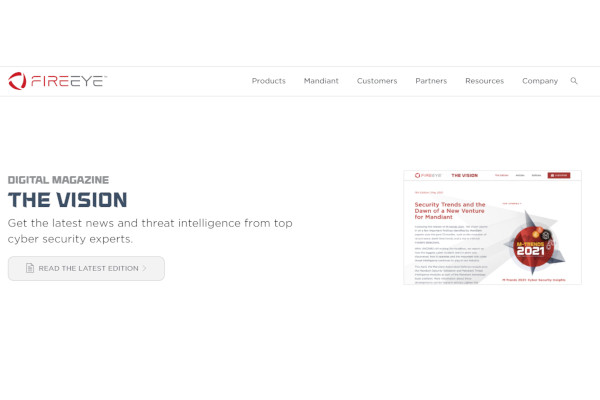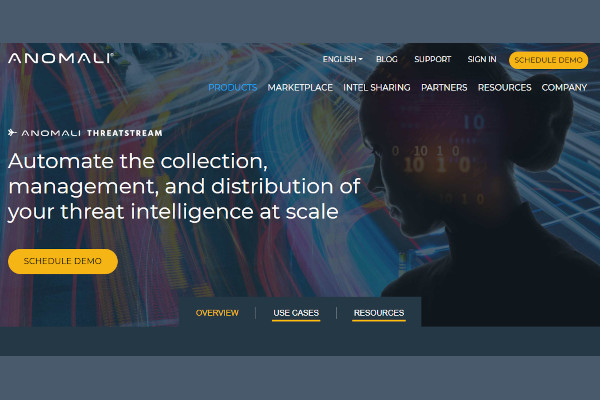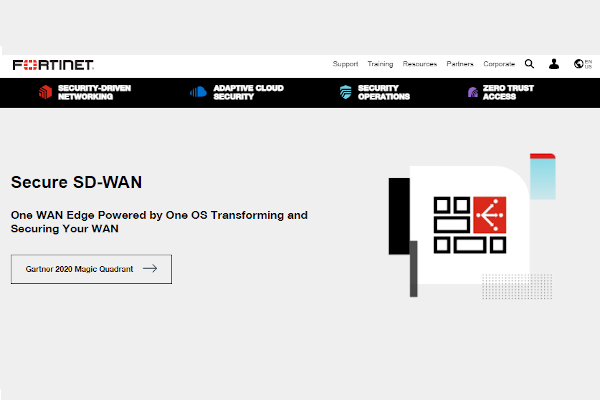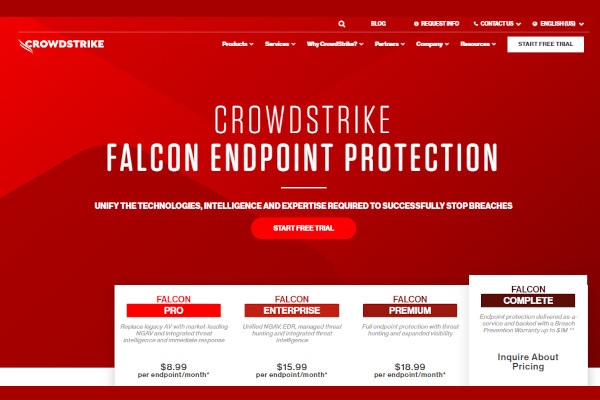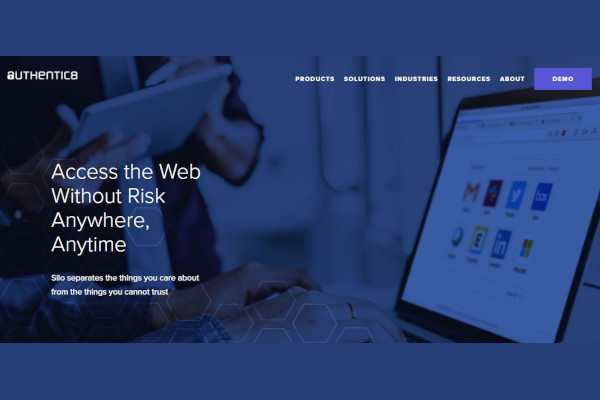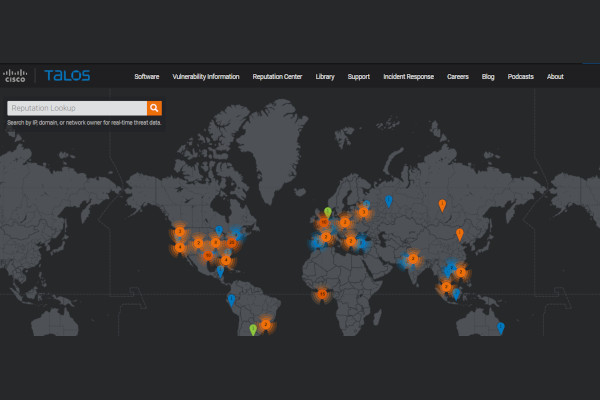Cyber attacks are a lot more common than we think. According to a study at the James Clark School from University of Maryland, it takes an average of 39 seconds for a hacker to commit a cyber attack. Most cyber security software has expanded their scope from finding viruses and malware in systems to now finding a malicious source that might plan a cyber attack in the future. In order for businesses to fully protect themselves from a future cyber attack, they must opt for a threat intelligence software where it can identify the risk before it can even start to attack. Here are some of the best threat intelligence software available right now.
10+ Threat Intelligence Software
1. FireEye
2. ThreatConnect
3. Anomali Threat Stream
4. SolarWinds
5. Recorded Future
6. McAfee Threat Intelligence Exchange
7. FortiGate
8. AlienVault USM
9. CrowdStrike Falcon
10. Authentic8 Silo
11. Cisco Talos
What Is Threat Intelligence Software?
Threat intelligence software is a cyber security tool that enables them to identify the malicious network that plans to commit a malicious cyber attack in the near future. Threat intelligence software analyzes the data of a possible threat that is speculated from sources. If the software determines that the threat is legitimate, it then modifies its entire cybersecurity software to protect itself from a future attack coming from the identified malicious source.
Benefits
Because cyberattacks are becoming more common, companies that opt to add threat intelligence in their cybersecurity system can benefit from the software’s constant real-time analysis of possible threats as they are guaranteed that they are well-prepared for a cyberattack. This also strengthens the company’s risk management strategies as they plan for possible solutions in case that the company is hit by those attacks. Some threat intelligence software would often publicly disclose the threats to inform the public about possible threats they should look out for, raising the awareness within industries and the public to strengthen their cybersecurity measures.
- Companies are well-prepared for future cyberattacks
- Strengthens risk management strategies
- Open transparency from some threat intelligence software
Features
Threat intelligence software is done both automated by the software’s artificial intelligence and manually by the developers. Because of this, some features require partial or full human intervention from the developers. Being able to look out for many threats as possible in real-time is a very important feature in threat intelligence as developers investigate the nature of these threats.
Research is another important feature in threat intelligence as they deeply analyze the threat data for information on the nature of the attack and its source. Another feature requires a bit of digital forensic work as the software tries to connect several threats and see if some of them are connected from the same attack source. Going undercover in the dark web is another feature of threat intelligence in which they try to find possible attackers and interact with them for information. Data found on threat intelligence can be overwhelmingly large and being able to generate data visuals helps developers better understand the context of the threats and how to respond to them.
- Real-time alerts on possible threats
- Researching on the threat
- Threat forensics/connecting
- Undercover in the dark web
- Data visualization
Top 10 Threat Intelligence Software
1. Cisco Talos
Headed by a 250-member team composed of researchers, engineers, and data analysts, Cisco Talos’ robust threat intelligence technology looks out for potential cyber attackers by identifying their networks publicly on their website. The parent company Cisco earns annual revenue of $49.3 billion.
2. FireEye
Employees at FireEye have impressively spent 22 years’ worth of responding to cyber threats in just a year, preventing 1 million malware attacks every day with its robust antimalware tools. Founded in 2004, the company has 3,400 employees and a revenue of $940 million in 2020.
3. ThreatConnect
ThreatConnect combines the technologies of risk quantification, threat intelligence platform, and security orchestration and response to maximize its protection of its clients from cyber threats Founded in 2011, the company has 129 employees and annual revenue of $37.5 million
4. Anomali Threat Stream
Anomali Threat Stream’s threat intelligence includes public collaboration with their clients and the public as they identify cyber threats from all corners of the globe with their robust features such as cloud protection, on-premise protection, virtual machine, and air gap. Anomali was founded in 2013 with 240 current employees and annual revenue that estimates around $10 to $50 million.
5. SolarWinds
SolarWinds helps its clients by providing various cybersecurity features and products needed to identify and protect themselves from cyber threats. Founded in 1999, the company has 3,200 employees and a revenue of $938.5 million in 2019.
6. Recorded Future
Recorded Future’s most advanced threat intelligence system analyzes the internet to find cyber threats and reports these threats to their clients and publicly through their website. Founded in 2009, the company has 450 employees and annual revenue of $128.3 million.
<h37. McAfee Threat Intelligence Exchange
McAfee Threat Intelligence Exchange offers real-time protection of their clients’ database servers at a fast, yet reasonably affordable price. The parent company McAfee has 6,900 employees and a revenue of $2.9 billion in 2020.
8. AlienVault USM
AlientVault USM offers cybersecurity tools that help their clients protect themselves from cyber attacks through vulnerability scanning, penetration testing, and many others. Founded in 2007, the company has 400 employees and was acquired by American telecom AT&T in 2018.
9. CrowdStrike Falcon
CrowdStrike Falcon gives their clients peace of mind with their cyber security tools that include their Falcon X technology that finds threats over time. Founded in 2011, the company has 3,163 employees and a revenue of $264.9 million in 2020.
10. Authentic8 Silo
Authetic8 Silo’s cloud-native system prevents their clients’ sensitive data from getting into the wrong hands. The company was founded in 2010 and has 107 employees.
FAQs
What makes threat intelligence software stand out compared to other cybersecurity features?
The classic cybersecurity features such as antivirus software and malware removal software are eliminating the threats that are already in the system. Threat intelligence software prevents that from happening by investigating the threats before they can attack their client’s systems.
Can threat intelligence guarantee 100 percent protection from cyberattacks?
Nothing is 100 percent guaranteed as hackers are always constantly learning how to bypass security measures. But if companies opt for a threat intelligence software in their cybersecurity system, they are ensured that they have higher chances of protecting themselves from a future cyberattack than the ones who don’t.
Do companies update their cybersecurity software to protect themselves?
According to Vox and Bright House Networks, only 25 percent of small businesses upgrade their cybersecurity software once a year with 35 percent of small businesses not renewing it yearly since they installed those systems. Threat intelligence software can only protect its clients that have opted for their service which is why companies need to often upgrade their cybersecurity systems as often as possible.
Looking at these possible threats might alarm people and businesses about the nature of the internet and whether we are truly secure. Having a full cyber security system that includes threat intelligence software can help people protect themselves from cyberattacks. It’s better to be safe than to be sorry.
Related Posts
10+ Best Chemical Software for Windows, Mac, Android 2022
12+ Best Vulnerability Scanner Software for Windows, Mac, Android 2022
4+ Best Bundled Pay Management Software for Windows, Mac, Android 2022
10+ Best Trust Accounting Software for Windows, Mac, Android 2022
10+ Best Patient Portal Software for Windows, Mac, Android 2022
13+ Best Virtual Reality (VR) Software for Windows, Mac, Android 2022
12+ Best Bed and Breakfast Software for Windows, Mac, Android 2022
15+ Best Resort Management Software for Windows, Mac, Android 2022
14+ Best Hotel Channel Management Software for Windows, Mac, Android 2022
12+ Best Social Media Monitoring Software for Windows, Mac, Android 2022
10+ Best Transport Management Software for Windows, Mac, Android 2022
10+ Best Other Marketing Software for Windows, Mac, Android 2022
10+ Best Top Sales Enablement Software for Windows, Mac, Android 2022
8+ Best Industry Business Intelligence Software for Windows, Mac, Android 2022
10+ Best Insurance Agency Software for Windows, Mac, Android 2022

